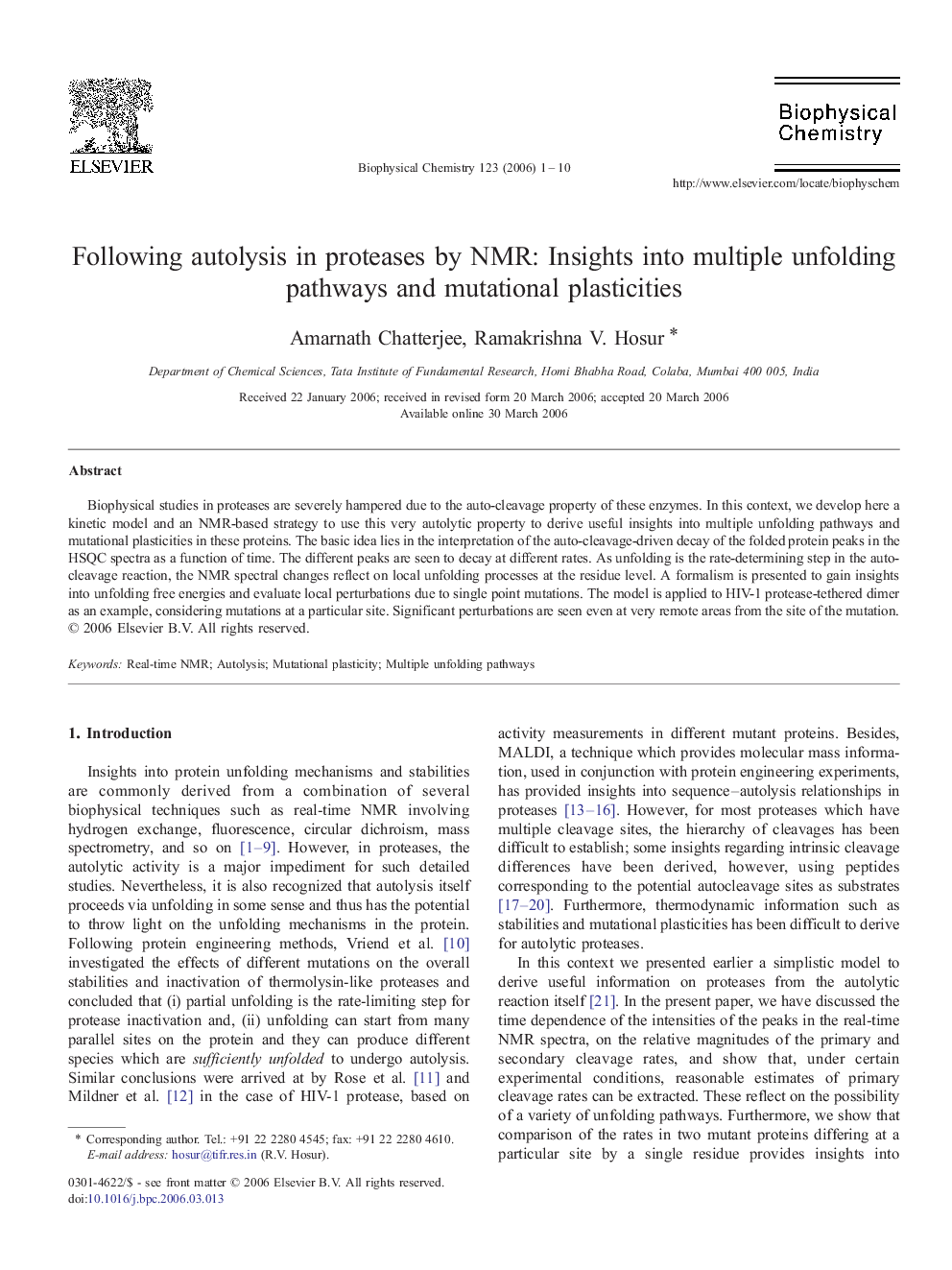| Article ID | Journal | Published Year | Pages | File Type |
|---|---|---|---|---|
| 5372392 | Biophysical Chemistry | 2006 | 10 Pages |
Biophysical studies in proteases are severely hampered due to the auto-cleavage property of these enzymes. In this context, we develop here a kinetic model and an NMR-based strategy to use this very autolytic property to derive useful insights into multiple unfolding pathways and mutational plasticities in these proteins. The basic idea lies in the interpretation of the auto-cleavage-driven decay of the folded protein peaks in the HSQC spectra as a function of time. The different peaks are seen to decay at different rates. As unfolding is the rate-determining step in the auto-cleavage reaction, the NMR spectral changes reflect on local unfolding processes at the residue level. A formalism is presented to gain insights into unfolding free energies and evaluate local perturbations due to single point mutations. The model is applied to HIV-1 protease-tethered dimer as an example, considering mutations at a particular site. Significant perturbations are seen even at very remote areas from the site of the mutation.
